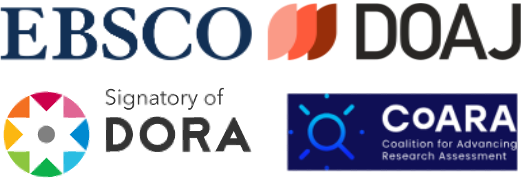Modelling the role of successful influencer marketing in health awareness
DOI:
https://doi.org/10.14267/VEZTUD.2025.04.01Keywords:
influencer, influencer marketing, health awareness, health-conscious consumer behaviourAbstract
89% of Hungary’s population, nearly 8.55 million individuals, use the internet regularly, which means more than 7 million Facebook and 3 million Instagram users in 2023 (KSH, 2022; STATISTA, 2023a, 2023b). For this reason, influencer marketing is a highly topical and innovative subject that significantly impacts the purchasing decisions of consumers who participate in online social platforms. This research aims to gain a deeper insight into the tools and techniques used in influencer marketing and how they influence consumers’ health awareness, using netnographic and in-depth interviews. Building on Pilgrim & Bohnet-Joschko’s research, the study will examine the messages conveyed by influencers, the communication strategies used and the consumers’ responses. The results include a process of influence and can contribute to a deeper understanding of the influencer marketing process by combining secondary and primary research experiences and provide an excellent basis for further studies.
Downloads
References
Balogh, D. (2022). Influenszermarketing – minden, amit tudnod kell róla! Boom Marketing. https://boommarketing.hu/instagram/influenszer-marketing/
Bapna, R. & Umyarov, A. (2015). Do your online friends make you pay? A randomized field experiment on peer influence in online social networks. Management Science, 61(8), 1902–1920. https://doi.org/10.1287/mnsc.2014.2081
Camanzi, L., Ahmadi, S., Prosperi, P., Collewet, L., Reem el, A., Chrysanti, C., Evagelos, D.L., Marcello, R., & Martina, F. (2024). Value seeking, health-conscious or sustainability-concerned? Profiling fruit and vegetable consumers in Euro-Mediterranean countries. British Food Journal, 126(13), 303-331. https://doi.org/10.1108/BFJ-12-2023-1151
Csizmár, L D. & Szenderák, J. (2020). Egészségtudatos magatartás vizsgálata és a reklámok hatása az egészségre általános iskolások és szüleik körében. Jelenkori Társadalmi és Gazdasági Folyamatok, 15(1-2), 23-36. https://doi.org/10.14232/jtgf.2020.1-2.23-36
Dörnyei, K. (2008). Bioélelmiszer fogyasztási szokások. Marketing & Menedzsment, 42(4), 34–42. https://journals.lib.pte.hu/index.php/mm/article/view/517
Dörnyei, K., & Mitev, A. (2010). Netnográfia, avagy on-line karosszék-etnográfia a marketingkutatásban. Vezetéstudomány, 41(4), 55–68. https://doi.org/10.14267/VEZTUD.2010.04.06
Emplify.io (2023). https://emplifi.io/resources/blog/instagram-engagement?utm_source=socialbakers.com
Farkas, N.D. (2019). Az egészséges táplálkozás megítélése a hazai fogyasztók körben. Táplálkozásmarketing, 7(1), 57-66. https://doi.org/10.20494/TM/7/1/4
Fehér, A. (2016). Az online fogyasztói magatartás vizsgálata az élelmiszeriparban (Doktori értekezés). Debreceni Egyetem, Gazdaságtudományi Kar, Ihrig Károly Gazdálkodási- és Szervezéstudományok Doktori Iskola. https://dea.lib.unideb.hu/items/90860e16-4aa2-4bb4-8243-6db208c34464
Gál, T., Soós, M., & Szakály, Z. (2016). Online fogyasztói csoportok azonosítása az egészségtudatos táplálkozás terén netnográfiai kutatással. In Fehér, A., Kiss, V.Á., Soós, M., & Szakály, Z. (Eds.), EMOK XXII. Országos konferencia 2016 Tanulmánykötet: Hitelesség és értékorientáció a marketingben (pp. 119-127). Debreceni Egyetem. https://emok.hu/hu/tanulmany-kereso/konferenciakotetek/d-460:online-fogyasztoi-csoportok-azonositasa-az-egeszsegtudatos-taplalkozas-teren-netnografiai-kutatassal
Gál, T., Soós, M., & Szakály, Z. (2017). Egészségtudatos táplálkozással kapcsolatos fogyasztói insight-ok feltárása netnográfiával – esettanulmány. Vezetéstudomány, 68(4), 46–54. https://doi.org/10.14267/VEZTUD.2017.04.07
Joshi, M., Korrapati, N.H., Reji, F., Hasan, A., & Kurudamannil, R.A. (2022). The impact of social media on skin care: a narrative review. Lviv Clinical Bulletin, 1(37)-2(38), 85-96. https://doi.org/10.25040/lkv2022.01-02.085
KSH. (2022). Internethasználók aránya [a 16–74 éves népesség százalékában]. https://www.ksh.hu/stadat_files/ikt/hu/ikt0029.html
Majláth, R. (2018). A youth marketing sokkal több influencerek felbérelésénél. Médiapiac, 15(9-10), 54–55. Máté, B. (2018). Kik azok az influenszerek, és mi az az influenszermarketing? https://matebalazs.hu/ki-az-influenszer.html
Maxwell, J.A. (2008). Designing a qualitative study. In Bickman, L. & Rog, D.J. (Eds.), The handbook of applied social research methods (pp. 214-253). Sage Publications.
More, J.S. & Lingam, C. (2019). A SI model for social media influenszer maximization. Applied Computing and Informatics, 15(2), 102–108. https://doi.org/10.1016/j.aci.2017.11.001.
Muller, E., & Peres, R. (2019). The effect of social networks structure on innovation performance: A review and directions for research. International Journal of Research in Marketing, 36(1), 3–19 https://doi.org/10.1016/j.ijresmar.2018.05.003
Nagy, A., Molnár, D., & Szikszai-Németh, K. (2018). A személyes márkaépítés kihívásai napjainkban. International Journal of Engineering and Management Sciences, 3(4), 485–494. https://doi.org/10.21791/IJEMS.2018.4.40.
Papp-Váry, Á.F. (2020). Az influenszermarketing alapjai – Gyakorlati áttekintés. ANNALES, 13, 71-90. http://www.papp-vary.hu/reklam_marketing/Az_influenszer_marketing_alapjai_Gyakorlati_attekintes.pdf
Paster, F. (2017). Hashoff: Instagram Dominates Influencer Marketing (Report). https://www.slideshare.net/slideshow/hashoff-instagram-dominates-influencer-marketing-report/75469475
Pásztor, J., & Bak, G. (2020). Digital divide: a technological generation gap. In MEB — 18th International Conference on Management, Enterprise, Benchmarking. Proceedings (MEB 2020) (pp. 158-168). Óbuda University. https://www.researchgate.net/publication/349007530_Digital_Divide_-_A_Technological_Generation_Gap
Perloff, R.M. (2014). Social media effects on young women’s body image concerns: theoretical perspectives and an agenda for research. Sex Roles, 71(11–12), 363–377. https://doi.org/10.1007/s11199-014-0384-6
Pilgrim, K.S., & Bohnet-Joschko, S. (2019). Selling health and happiness how influencers communicate on Instagram about dieting and excercise: mixed method research. BMC Public Health, 19, 1054. https://doi.org/10.1186/s12889-019-7387-8
Rogers, M.A., Lemmen, K., Kramer, R., Mann, J., & Chopra, V. (2017). Internet-delivered health interventions that work: systematic review of metaanalyses and evaluation of website availability. Journal of Medical Internet Research, 19(3), e90. https://doi.org/10.2196/jmir.7111
Sas, I. (2018). Reklám és pszichológia a webkorszakban – Upgrade 4.0 – A kiegyezés kora. Kommunikációs Akadémia.
STATISTA (2023a). Number of Facebook users in Hungary from September 2018 to November 2024. https://www.statista.com/statistics/1029770/facebook-users-hungary/#:~:text=The%20number%20of%20Facebook%20users%20in%20Hungary%20amounted,recorded%20in%20March%202022%20at%207.43%20million%20people
STATISTA (2023b). Instagram users in Hungary from September 2018 to July 2024. https://www.statista.com/statistics/1024797/instagram-users-hungary/#:~:text-=The%20number%20of%20Instagram%20users%20increased%20in%20Hungary,platform%27s%20users%20reached%202.9%20million%20in%20the%20country
STATISTA (2023c). Distribution of Instagram users in Hungary in July 2024, by age. https://www.statista.com/statistics/1024788/instagram-users-hungary/#statisticContainer
STATISTA (2023d). Distribution of Instagram users worldwide as of April 2024, by age group. https://www.statista.com/statistics/325587/instagram-global-age-group/
STATISTA (2023e). Social media - statistics & facts. https://www.statista.com/topics/1164/social-networks/
STATISTA (2023f). Influencer advertising spending in Hungary from 2020 to 2030. https://www.statista.com/statistics/1266021/hungary-influenszer-advertising-spending/#:~:text=Influenszer%20advertising%20spending%20reached%20over%2026%20million%20U.S.,from%202017%20to%202027%20%28in%20million%20U.S.%20dollars%29
Tessényi, J., & Kovács, J. (2023). Influenszerek hatásának vizsgálata különös tekintettel az élelmiszervásárlásra. GRADUS, 10(1), 1-6. https://doi.org/10.47833/2023.1.ECO.002

Downloads
Published
How to Cite
Issue
Section
License
Copyright (c) 2025 Corvinus University of Budapest, publisher of Vezetéstudomány / Budapest Management Review

This work is licensed under a Creative Commons Attribution 4.0 International License.
Authors assign copyright to Vezetéstudomány / Budapest Management Review. Authors are responsible for permission to reproduce copyright material from other sources.

